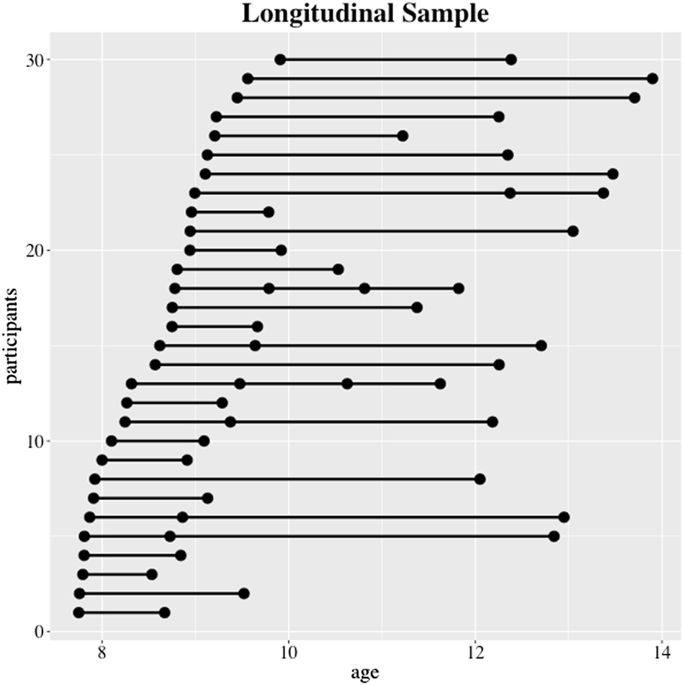当前位置:
X-MOL 学术
›
npj Sci. Learn.
›
论文详情
Our official English website, www.x-mol.net, welcomes your
feedback! (Note: you will need to create a separate account there.)
Mechanisms of interactive specialization and emergence of functional brain circuits supporting cognitive development in children.
npj Science of Learning ( IF 3.6 ) Pub Date : 2018-01-10 , DOI: 10.1038/s41539-017-0017-2 Christian Battista 1 , Tanya M Evans 1 , Tricia J Ngoon 1 , Tianwen Chen 1 , Lang Chen 1 , John Kochalka 1 , Vinod Menon 1, 2, 3, 4
npj Science of Learning ( IF 3.6 ) Pub Date : 2018-01-10 , DOI: 10.1038/s41539-017-0017-2 Christian Battista 1 , Tanya M Evans 1 , Tricia J Ngoon 1 , Tianwen Chen 1 , Lang Chen 1 , John Kochalka 1 , Vinod Menon 1, 2, 3, 4
Affiliation

|
Cognitive development is thought to depend on the refinement and specialization of functional circuits over time, yet little is known about how this process unfolds over the course of childhood. Here we investigated growth trajectories of functional brain circuits and tested an interactive specialization model of neurocognitive development which posits that the refinement of task-related functional networks is driven by a shared history of co-activation between cortical regions. We tested this model in a longitudinal cohort of 30 children with behavioral and task-related functional brain imaging data at multiple time points spanning childhood and adolescence, focusing on the maturation of parietal circuits associated with numerical problem solving and learning. Hierarchical linear modeling revealed selective strengthening as well as weakening of functional brain circuits. Connectivity between parietal and prefrontal cortex decreased over time, while connectivity within posterior brain regions, including intra-hemispheric and inter-hemispheric parietal connectivity, as well as parietal connectivity with ventral temporal occipital cortex regions implicated in quantity manipulation and numerical symbol recognition, increased over time. Our study provides insights into the longitudinal maturation of functional circuits in the human brain and the mechanisms by which interactive specialization shapes children's cognitive development and learning.
中文翻译:

支持儿童认知发展的互动专业化机制和功能性脑回路的出现。
人们认为认知发展取决于功能回路随着时间的推移而完善和专业化,但人们对这一过程在童年过程中如何展开知之甚少。在这里,我们研究了功能性大脑回路的生长轨迹,并测试了神经认知发展的交互式专业化模型,该模型假设与任务相关的功能网络的细化是由皮层区域之间共同激活的共同历史驱动的。我们在 30 名儿童的纵向队列中测试了该模型,这些儿童在童年和青春期的多个时间点使用行为和任务相关的功能性脑成像数据,重点关注与数字问题解决和学习相关的顶叶回路的成熟。分层线性模型揭示了功能性大脑回路的选择性强化和削弱。顶叶和前额叶皮层之间的连接随着时间的推移而减少,而后脑区域内的连接,包括半球内和半球间的顶叶连接,以及涉及数量操作和数字符号识别的腹侧颞枕叶皮层区域的顶叶连接,随着时间的推移而增加时间。我们的研究提供了对人脑功能回路的纵向成熟以及互动专业化塑造儿童认知发展和学习的机制的见解。
更新日期:2018-01-10
中文翻译:

支持儿童认知发展的互动专业化机制和功能性脑回路的出现。
人们认为认知发展取决于功能回路随着时间的推移而完善和专业化,但人们对这一过程在童年过程中如何展开知之甚少。在这里,我们研究了功能性大脑回路的生长轨迹,并测试了神经认知发展的交互式专业化模型,该模型假设与任务相关的功能网络的细化是由皮层区域之间共同激活的共同历史驱动的。我们在 30 名儿童的纵向队列中测试了该模型,这些儿童在童年和青春期的多个时间点使用行为和任务相关的功能性脑成像数据,重点关注与数字问题解决和学习相关的顶叶回路的成熟。分层线性模型揭示了功能性大脑回路的选择性强化和削弱。顶叶和前额叶皮层之间的连接随着时间的推移而减少,而后脑区域内的连接,包括半球内和半球间的顶叶连接,以及涉及数量操作和数字符号识别的腹侧颞枕叶皮层区域的顶叶连接,随着时间的推移而增加时间。我们的研究提供了对人脑功能回路的纵向成熟以及互动专业化塑造儿童认知发展和学习的机制的见解。





















































 京公网安备 11010802027423号
京公网安备 11010802027423号